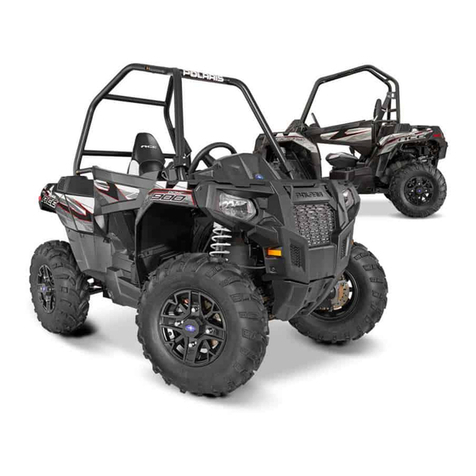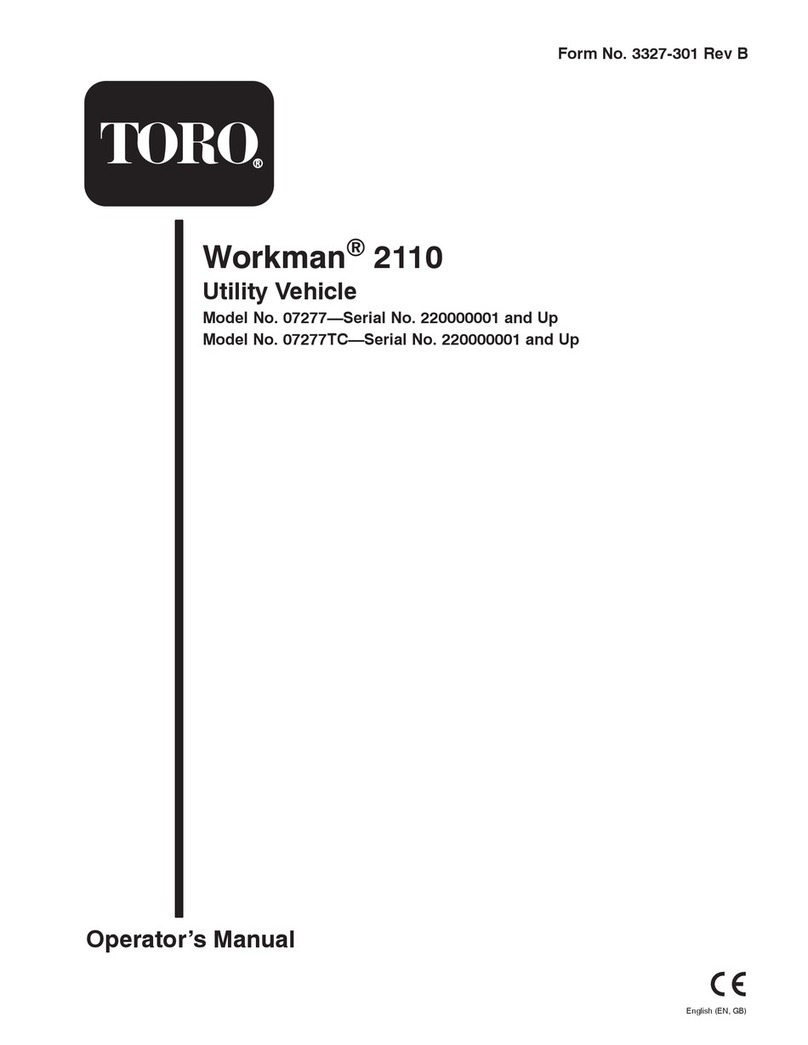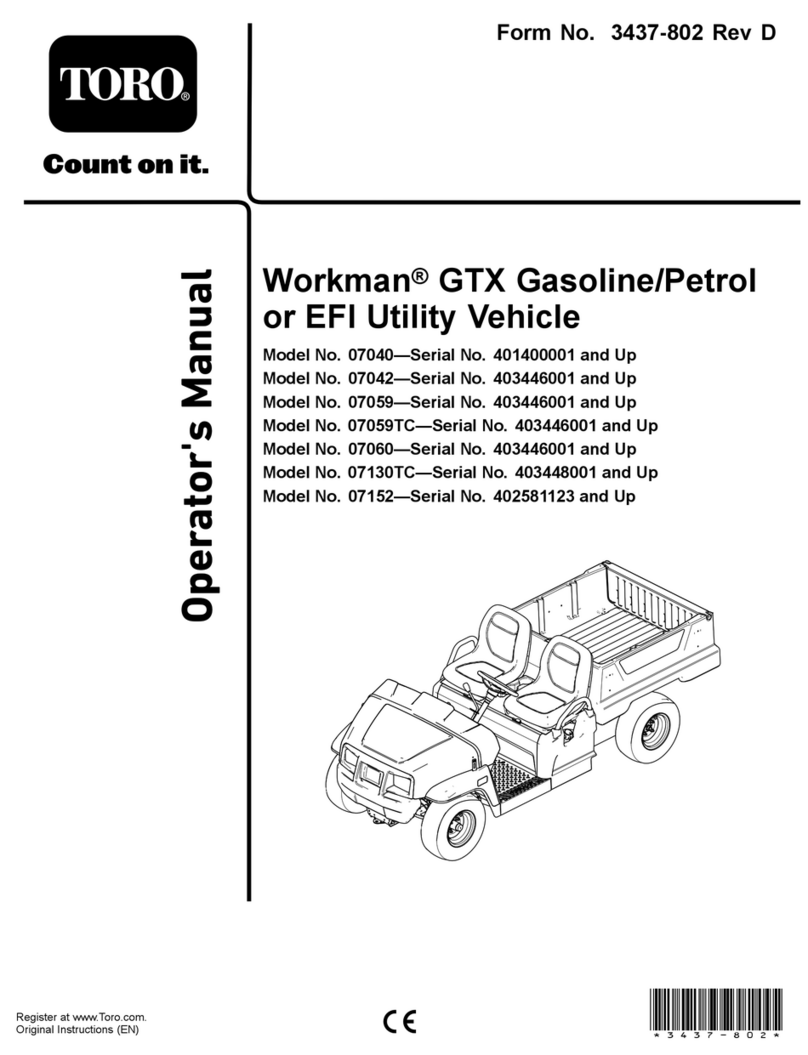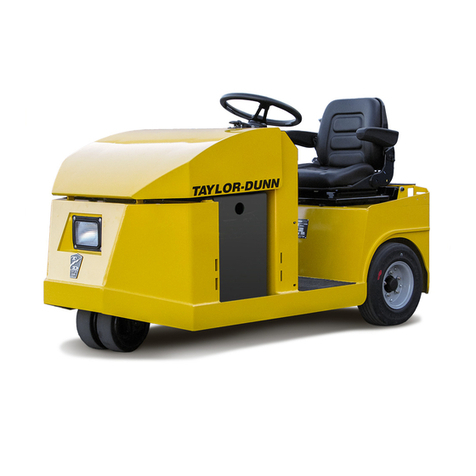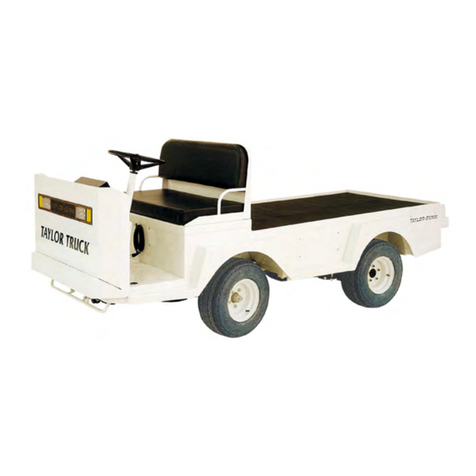Skeeter Boat Trailer Instructions for use

SKEETER TRAILERS
OWNERS OPERATION MANUAL
WWW.SKEETERBOATS.COM

WARNINGS 1
TRAILER LENGTH 2
ATTACHING YOUR TRAILER 2
HITCH RECOMMENDATIONS AND TIPS 4
COUPLER AND HITCH BALL OPERATION 5
USING SAFETY CABLES 6
TONGUE JACK AND CARE 6
TRAILER LIGHTS 7
LED 7
BEFORE YOU TOW 7
WINCH ADJUSTMENT 8
SWING TONGUE 8
ON THE ROAD 10
STOPPING/FOLLOWING DISTANCE 10
HILLS 10
PASSING 10
SWAY/FISHTAILING 10
ROAD SHOULDERS 11
BACKING 11
BREAKDOWNS & ACCIDENTS 11
GETTING IN AND OUT OF WATER 11
LAUNCHING AND LOADING 12
TRAILER MAINTENANCE AND STORAGE 13
TUFF COAT FINISH 13
WHEEL INSTALLATION 14
WHEEL ALIGNMENT 14
TIRE REPAIR 14
CHECK ALL NUTS AND BOLTS 14
LUG BOLT OR NUT TIGHTENING METHOD 14
TRAILER BRAKING SYSTEM 15
Table of Contents
HYDRAULIC SURGE (DISK BRAKES) 15
BRAKE OPERATION AND MAINTENANCE 15
BRAKE ADJUSTMENT 15
TROUBLE- SHOOTING HYDRAULIC BRAKES 17
WHEEL, TIRE AND HUB CARE 18
DISC BRAKES 18
TIRE CHANGING 18
JACK PLACEMENT 18
TIRE BASICS 19
FINDING TIRE PRESSURE AND LOAD
LIMITS
19
TIRE PRESSURE 19
MEASURING AND ADJUSTING AIR
PRESSURE
20
CONSEQUENCES OF UNDER INFLATION 20
TIRE FUNDAMENTALS 21
TIRE INFORMATION 21
TIRE SIZE 21
TIRE, CARE 22
DETERMINING LOAD LIMITS 22
LOCATING THE LOAD LIMIT INFORMATION 23
UNDERSTANDING HOW CARGO AFFECTS
TRAILER CAPACITY
24
TIRE TERMINOLOGY 24
TRAILER TERMINOLOGY 27
REPLACEMENT OF VIN TAGS 30
CANADIAN REGISTRATION RECALL
CLEARANCE DOCUMENT
30
ADDITIONAL INFORMATION 30
WARRANTY REGISTRATION & QUESTIONS 30
SAFETY DEFECTS REPORTING 31
WARNINGS
THE FOLLOWING SIGNAL WORDS AND
SYMBOLS ARE USED TO ALERT YOU TO
POTENTIAL HAZARDS. PLEASE ADHERE TO
ALL MESSAGES AND INSTRUCTIONS THAT
FOLLOW THESE WORDS TO AVOID POSSIBLE
SERIOUS INJURY, OR DEATH.
WARNING indicates a potentially hazardous
situation which, if not avoided, could result
in serious injury, or death.
CAUTION indicates a potentially hazardous
situation which, if not avoided, may result in
minor or moderate injury.
NOTICE indicates special precautions that
must be taken to avoid damage to the trailer
or other property.
CAUTION
!
NOTICE
WARNING
!

2 3
Make sure the coupler completely covers the ball and the
ball clamp inside the coupler is below the ball, not on top
of the ball. Use a padlock or supplied pin to secure the
coupler lever in the locked (down) position, failure to do
so can cause trailer to become detached from tow vehicle,
which may result in serious injury or death.
After the coupler is locked on the hitch ball, raise
the front of the trailer using the tongue jack. If the
coupler comes loose, reattach the coupler to the
hitch ball and raise the front of the trailer again. If
the coupler will not stay attached, check the hitch
ball and coupler for size and damage.
BEFORE TOWING THIS TRAILER
CHECK THAT:
•Coupler and hitch ball are the same size and
correct rating.
•Coupler is latched (Closed).
•All safety chains are attached. The trailer
safety chains are crossed under the tongue.
•All trailer lights are working correctly.
•Boat is secured to the trailer front and rear. (DO NOT use
winch line alone).
•Tongue jack is all the way up and stored.
•Wheel lug bolts or nuts are tight.
•Tires have correct pressure.
•Trailer brakes are adjusted and breakaway cable is
attached to tow vehicle
•Load in trailer is within trailer capacity, distributed
correctly, and the trailer tongue weight is correct.
This product contains chemicals known to the State of
California to cause cancer and other birth defects or other
reproductive harm.
Introduction
Death, serious injury, and/or property damage can result
if you do not read and follow instructions in the owner’s
manual. Make sure all people towing this trailer read and
follow the instructions.
We would like to thank you for purchasing
a SKEETER Boat Trailer, which is National Marine
Manufacturers Association ( NMMA ®) certified,
and National Association of Trailer Manufacturers
(NATM ®) compliant.
NMMA Certification means we comply with
established industry standards and federal safety
regulations. NATM verification compliance program
verifies trailers are built to meet best practices
according to state and federal regulations.
Both organizations require annual or bi-annual
inspections of the manufacturers facility and
trailers.
Your new trailer is designed to make loading and
launching your boat easier. Read this manual
carefully before you use your trailer because
it gives important details on the trailer you
just purchased. Pay attention to and follow all
instructions and maintenance procedures in this
manual.
Trailer Length
Make sure when the boat is on the trailer, there is enough
space between the front of your boat and the back of your
tow vehicle.
The weight of the boat, as listed in the boat
manufacturer’s product brochure, may not include the
weight of the motors, fuel, water and personal gear
and should not be used alone when choosing a trailer.
Overloading can cause serious injury or property damage.
Attaching Your Trailer
Always get help to back your tow vehicle to your trailer.
NEVER move the trailer to the tow vehicle.
Before hitching your trailer to your tow vehicle,
please check the items listed on the decal located
on or near the winch stand.
Your SKEETER Dealer will provide another decal if
it is missing or illegible.
Raise the front of the trailer with the tongue jack.
Back your tow vehicle close to the trailer, then get
out and check the location of the coupler and hitch
ball. Move your tow vehicle until the coupler is over
the hitch ball. Using the tongue jack, lower the
trailer until the coupler completely covers the hitch
ball. Lock the coupler with the supplied hitch pin.
WARNING
!
WARNING
!WARNING
!
NOTICE
WARNING
!NOTICE

4 5
Several models of Weight distribution hitches will
render the brakes inoperative. SKEETER cannot
assume responsibility or accept warranty claims in
such instances. Please make sure the Weight
distribution hitch you choose is compatible with
the trailer’s braking system.
Please Note: Hitch ball height is determined by
measuring from the ground to the top of the
coupler ball housing with the trailer frame level
when the trailer is on a level surface. The average
height to the top of the hitch ball is usually from
14 inches to 21 inches above the ground when
loaded. Actual height will vary from trailer to
trailer.
For proper load distribution on tandem and triple torsion
axle trailers, it is very important that the trailer is
parallel to the ground while towing
Every coupler on a SKEETER boat trailer is
permanently marked with:
•Manufacturer’s code, name or trademark;
•SAE ® coupling designation and gross
coupler rating;
•Part number or style model; and Proper
ball diameter.
Coupler and Hitch Ball Operation
Do not use a different size ball shank, or capacity than
recommended and be sure both the hitch ball and hitch
ratings are the same or more than the Gross Vehicle
Weight Rating of your trailer.
Keep the latch mechanism clean and lightly oiled.
If the latch mechanism or coupler is bent or
deformed in any manner, do not use the trailer
until a new latch assembly or coupler is installed.
Some replacement assemblies and rebuild kits are
available at your SKEETER dealer.
SKEETER trailers are equipped with XR-84
couplers. An example is shown below.
TO OPEN THE COUPLER (XR-84)
Remove hitch pin from hole on side of the coupler.
Lift handle up and toward the rear until it rests in
the open position. This coupler is self-latching and
does not require the latch handle to be in the open
position to insert the hitch ball.
TO CLOSE COUPLER (XR-84)
Coupler does not need to be in the open position
when placing on hitch ball. To latch coupler onto
hitch ball, make sure hitch pin is removed from
side of coupler and simply lower coupler over ball.
During this process, the coupler handle will rise
and then self close when the coupler is fully seated
onto hitch ball. If handle does not return to the
fully closed position, ball is not fully inserted into
coupler socket, there is a misalignment between
coupler and ball or ball is oversized or egg shaped.
DO NOT FORCE HANDLE. If necessary, replace ball
with a quality unit that meets SAE specifications
and the GVWR of the trailer. Once the handle is
fully closed, insert hitch pin into hole on side of
coupler. Hitch pin should go completely through to
other side of coupler. To close coupler handle, push
handle horizontally toward the front and it will
slide down into the closed position.
You are required to obey local and state laws and
regulations regarding brakes, licensing, and additional
equipment that is needed for your trailer. Contact your
state motor vehicle department for more information.
After the coupler is secured to the hitch ball, raise
the tongue jack all the way. If you have a swing-up
style tongue jack, turn it to the traveling position
and make sure the lock pin is secure in the hole.
Cross the safety chains or cables under the tongue
and attach them to the tow vehicle. Connect the
trailer wiring harness to the lighting system of
your tow vehicle. Remember to check your lights.
Spot check all other trailer components (i.e. tires
and tie-downs).
Hitch Recommendations and Tips
Make sure the jack is in the stored or traveling position
before towing the trailer. If it is not, it can cause the
trailer to separate from the tow vehicle, which may result in
serious injury or death.
Our trailer’s GVWR must not exceed the capacity of your
hitch. Be sure you have the right size ball, shank, and
capacity to match your trailer’s model and coupler size.
The correct ball size and capacity is marked on the coupler
Two types of trailer hitches are normally used:
Weight carrying hitches which attach to the tow
vehicle and support the trailer tongue weight only,
and Weight distributing hitches which transfer
some of the tongue weight to the tow vehicle by
using extra spring bars on each side of the trailer
ball. Bumper hitches are not recommended for
boat trailers.
For most boat trailers, a Weight carrying hitch
is usually adequate. Weight distributing hitches
are recommended for very heavy loads. Before
you decide which hitch to buy, contact your
SKEETER Dealer and read the manufacturer’s
recommendations for your towing vehicle.
SKEETER does not recommend self-installation of
trailer hitches.
If you choose a Weight distributing hitch, contact a
dealer specializing in hitches and hitch installation
to make sure it is properly installed, that it is
compatible with your trailer’s brake system and
that you don’t exceed weight requirements.
Do not use Weight distributing hitches with surge- braked
trailers. Overloading or improper installation of
Weight distributing hitches may not let hydraulic
surge brake actuators work and the tow vehicle and
trailer may take longer to stop.
WARNING
!
WARNING
!
WARNING
!
WARNING
!
WARNING
!
IMPORTANT

6 7
Like the winch, or any kind of mechanical
assembly, a jack requires lubrication maintenance.
Regularly grease the drive gear, and rack & pinion
and oil the caster and wheel bearings.
Trailer Lights
To avoid serious injury or death back trailer lights to make
sure they are in working order before any trip. If your trailer
has electric brakes, unplugging the trailer wire from the tow
vehicle will disable the trailer brakes.
Always double check your lights to make sure they
are in working order before any trip.
Twice a year, it is a good idea to inspect your
taillights and look for bare wires, cracked insulation
or corroded terminals. Always be sure the white
ground wire is connected to the trailer frame.
Replace all worn or damaged parts.
Dialectric grease can be put on plug contacts and
bulb bases to prevent rust and corrosion.
Tow vehicles with three-light lighting system
(different lights for brake, turn, and tail lights)
need an adapter to change the three-light system
to a two-light system. Make sure your vehicle is
equipped with the proper lighting package. We
recommend a professional, i.e. your auto motive
dealer, install it for you. SKEETER’s Wire Color Code
is listed below.
LED
Your SKEETER trailer is equipped with LED’s which
are energy efficient and have a longer life.
Wire Color Code
WHITE Ground
BROWN Taillights, side Marker Lights.
YELLOW Left Brake, Left Turn
GREEN Right Break, Right Turn
BLUE Back Up Solenoid, Reversing Light
SKEETER Wire Color Code
Before you Tow
(Tying Down Your Boat)
Make sure the boat is secure and held in place before
towing.
Tie down the boat securely at the stern, in both a
downward and forward direction, with approved
tie downs. Use the rear tie down points provided
on your trailer.
Do not tow your vehicle if latch handle will not
remain closed or with the handle open. Check to
see if coupler is locked by lifting up on the handle.
If the handle opens, the hitch ball is not the right
size, oversized, egg shaped or the latch parts have
been damaged. If the latch is damaged, contact
UFP for replacement parts at www.ufpnet.com.
For further information see actuator brochure in
your new trailer packet or visit www.ufpnet.com
You must install the hitch pin (supplied) into the
hitch pin hole before towing to prevent the coupler
latch opening accidentally, which may result in serious
injury or death.
Always attach the trailer and boat bow safety
chains before towing.
Using Safety Cables
Your trailer hitch should have a place to attach the
trailer safety chains or cables. Crisscross the trailer
safety chains or cables under the trailer tongue
before attaching to the towing vehicles. Most state
laws require the crisscrossing of these chains or
cables. This may prevent the trailer tongue from
falling to the road in the event that the trailer
coupler becomes detached from the hitch ball.
Do not connect the trailer safety chains or cables
together.
Original trailer safety chains or cables should not
be removed or tampered with. Should you need
to replace them, contact a SKEETER Dealer for
replacement chains or cables and hooks.
Proper attachment of the safety chains/cables is
essential to trailer safety.
Tongue Jack Use and Care
Place the jack into position, crank the jack
handle until the trailer coupler is high enough for
the coupler to go over the hitch ball and lower the
trailer coupler onto the ball by cranking the jack
handle in the opposite direction.
To avoid serious injury or death, back your tow vehicle to
your trailer. DO NOT move your trailer to the tow vehicle.
When the trailer is moved without a tow vehicle the brakes
do not work.
If your jack is a swing up type, return it to its
stowed (up) position, making sure the securing pin
is firmly in its hole. If your jack is not a swing-up
type, retract your trailer jack completely (wheel
raise as high as possible) before towing the trailer.
Care must be used when engaging or disengaging a
swing-up style tongue jack.
When using the jack in the down position to
support weight, make sure the securing pin is
firmly in its hole before adding any weight to the
jack. If the securing pin is not firmly in its hole,
the jack may collapse under the weight placed
on it. While towing, if your jack is not folded up
or retracted completely, damage could result and
your jack may have to be replaced.
WARNING
!
WARNING
!
WARNING
!
WARNING
!
NOTICE
WARNING
!
Table of contents
Popular Utility Vehicle manuals by other brands

Cushman
Cushman Turf Truckster 84069 Parts & maintenance manual

Landoll
Landoll 900D Series Operator's manual

Westward
Westward Go-4 XTR Operator's manual

Club Car
Club Car Carryall I 1999 owner's manual

Etnyre
Etnyre Street Flusher operation, maintenance, parts and safety manual

Landoll
Landoll 340 Operator's manual



